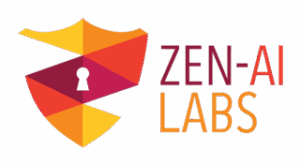
AI as a Service
Established as a cybersecurity provider, Zen Strategics has been evolving its offerings, including DevSecOps, infrastructure as a code and more modern IT development practices. With AI clearly the next adventure for industry, the partnership with Cognida.ai creates an opportunity to approach this new enterprise from a product line development perspective, utilizing AI to enhance cybersecurity services.
“We’re not following the race to create the next chat product. Instead we’re looking at AI as an augmented service, a digital assistant of sorts who can perform the tedious and mundane functions like reading a regulation and determining, based on inputs, whether that regulation has been put into practice.”
Leveraging its experts across the cybersecurity spectrum, combined with Cognida.ai’s expertise in developing the rules and training the AI to complete specific functions, the goal is to replace labor the cybersecurity professional is spending time on so they can take on the next level of making their organization more productive and secure.
Human in the Loop
While many are fully embracing AI, for others there is still some trepidation, some reasonable concerns, and some less so. Zen is focused on eliminating some of those concerns by setting specific parameters for its solutions. “We’re not releasing AI into the wild. We’re delivering an assistant designed to perform specific roles, with a concise guideline and set of rules. This will be a way for federal agencies to ease into AI, to know what the technology is doing, and exactly what the expectations and outcomes are.”
As the human in the loop, the customer can review the work, ensure it is delivering what is expected, and no more, and then confidently leave behind those mundane and time-consuming tasks such as security compliance that requires reviewing documentation, NIST controls, federal law, control sets, documentation and so on. “Right now there are entire workforces who do nothing but this. Those employees would be far better utilized verifying what is on paper is actually happening. As it is now, they just don’t have the time.”
Comparing today to 80’s modernization, the expectation is that there will be an evolution within the workforce, where those performing lower-skilled tasks can be shifted to higher skilled roles analyzing data, confirming compliance and looking ahead to other ways to improve, elevating the cyber posture nationwide. “We see this cultural evolution every 40-50 years or so. Currently that shift is that AI is getting really good so how do we use it in a way that makes sense. Knowing that our products will be limited; that they will never go beyond what they are designed to, should give people the confidence to try it, become accustomed to it, and allow them to move to that next level in their career.”
Meeting the Agenda
With goals of gaining efficiencies, reducing costs over time, this effort at AI aligns with the priorities of the current Administration and allows federal agencies an opportunity to initiate low-level AI projects that are going to dramatically reduce costs in a risk-free way. “As we roll out these products there may be resistance but there will be training and we think the interest and the curiosity, the opportunity, will outweigh the naysayers. These products will support the goal of doing more with less and offer creative ways for agencies to start to leverage AI in a way that is comfortable to them.”
An Opportunity for Procurement
Those tasked with creating procurement requirements have an opportunity to ensure those goals of doing more with less through their language and specific asks. “Think of the possibility the terms ‘creative out-of-the-box solution’ or ‘AI as a service’ or perhaps ‘digital assistant’ could drive. Even the addition that AI initiatives will be entertained can open the door for better solutions.”
Given that industry has seen proposals passed by and protested where the decision is based on a bid that was too low, government must recognize and acknowledge the ‘more with less’ ultimately could result in a significantly lower bid and must be willing to dig in to see how that lower cost is being derived. “Just because something used to be a $30M contract, that doesn’t mean a $10M bid is lacking. It could be the one that offers the better way to move forward.”
The Partner Lens
While its initial focus is on that administrative side of tasks, Zen has already begun to design to more engineering or application-based services. Ultimately, this will require partners who have expertise in these areas.
“We’re looking for partners from industry and government to share their problems so we can work together to see what we can create. Let’s work together to creatively attack this so that you don’t have to unleash a full blown AI product in your environment, but you can unleash a digital assistant that is going to enhance the current operations.”
“We’re very excited to be working with Cognida.ai. This is an amazing thing we are about to embark on. To be developing solutions that will fundamentally change the future, not just for government, but for the civilian sector as well is inspiring. We don’t know what the future will bring but we know the world of tomorrow will be very different and this is a big step in that direction.”
Check out the video here
